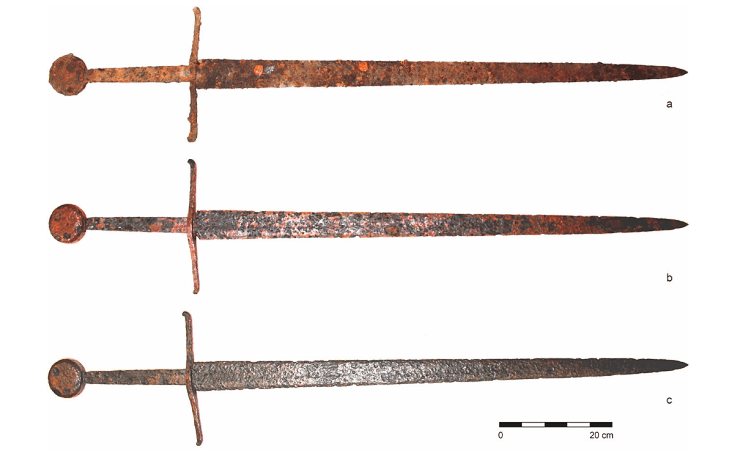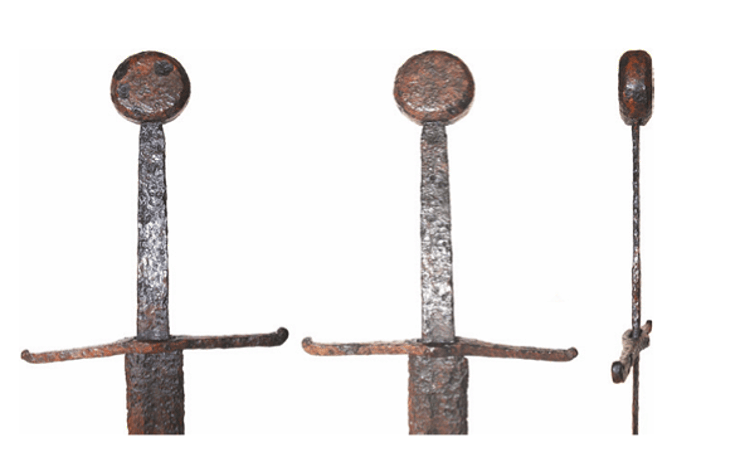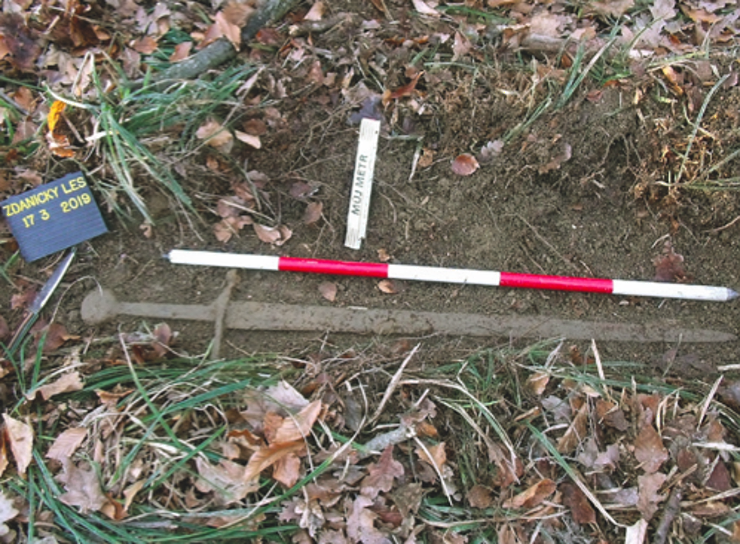 krásnej 👍😃
krásnej 👍😃
1. 5. 2019 Medieval sword from Ždánický les
Categories: Finds and rescue research in the Czech Republic , Calendar
A massive medieval sword was discovered three years ago by a man using a metal detector in the Ždánice forest. The weapon dates back to the turn of the fourteenth and fifteenth centuries. It was probably a purely functional and practical weapon.
A large number of finds in South Moravia are located in the Ždánický Forest and the adjacent Chřiby Upland. Archaeologists have already discovered a considerable number of artefacts there. Three years ago, for example, the aforementioned medieval long sword was found there, which was exceptionally well preserved.
It was discovered with the help of a metal detector by an associate of the Vyškov Museum. The weapon was located on a wooded hillside in the "U broad path" in the cadastre of Mouřínov. He found the sword only partially uncovered and then called the museum, which sent an archaeologist to the site.
The weapon was located at a depth of about twenty centimetres and was hidden in medium yellow-grey clay soil. No evidence of deliberate digging was found to indicate that the weapon had been buried deliberately. No other artifacts were found nearby.
The man recovered a very well-preserved massive sword measuring 1150 mm in length. It weighed 2044 grams before the conversation and 1905 grams after. The 888 mm blade was massive and double-edged. The guard, 243 mm long, had slightly curved arms to the blade and was made of edged iron rod. The flat pommel of oval shape is interesting.
This type is one of the most common blade shapes in use during the High Middle Ages. There is a mark along both surfaces of the blade just below the guard, the form of which can be described as a forked or robber's cross. This is a relatively unique signature.
According to archaeologists, the sword dates from the turn of the fourteenth and fifteenth centuries. It was probably made by several specialist craftsmen who may have been completely independent of each other.
'The guard and pommel have holes for the blade's thorn pierced through the butt, and the dimensions of these holes do not correspond, especially in width, to the actual dimensions of the sword's hilt. This could suggest that prefabricated blanks were used during the construction of the weapon, which were then adapted to the specific blade," the archaeologists explain.
It was probably a purely functional and practical weapon. The sword may have been related to a nearby fortified settlement at Hradisko, known in the literature as Újezd or Lhota u Ždánic,



Sources:
www.avcr.cz (A new find of a late medieval long-sword from Ždánice Forest)
The article is included in categories:












